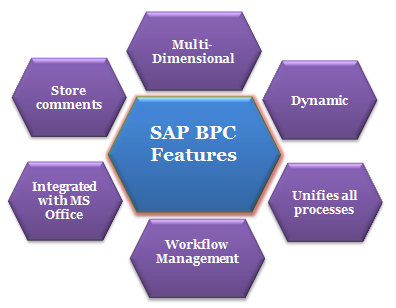What is Business Planning and Consolidation (SAP BPC)?
SAP BPC is one of the important tools of SAP systems and it stands for Business Planning and Consolidation also known as Outlook Soft.
SAP BPC is a high-performance management tool that enables all types of planning, future forecasting, and consolidation. At the same time SAP allows for an easy integration and consolidation at all levels. Besides that, with SAP BPC it’s quite easy to make use of reporting tools.
Why SAP BPC is so important?
Chief Financial Officers of all companies are always under great pressure to produce maximum profits and increase the profitability of all processes. They are also under pressure to minimize risk, reduce operational costs to as much as possible, and enhance the shareholder confidence in their companies. All of these tasks are easier for CFO by using SAP BPC, which is the leading technology product in the business. BPC helps your organization to integrate all your business processes and technologies onto just one single platform which supports both high-end as well as shoestring budgets, making your planning, forecasting, and reporting activities much easier.
Advantages of SAP BPC
1. With the help of Business Planning and Consolidation you can plan and monitor business activities in a more comprehensive manner and helps better decision making.
2. Most importantly, SAP Business Planning and Consolidation gives you the space and freedom to use your most skilled employees to work at more high-value or high-end work than spend all their time at mundane and boring work that could be easily done by anybody who is less capable.
3. It makes it possible for you to improve your cross-organization collaboration and increases your organization’s responsiveness to a much more dynamic business environment.
4. More than anything else, SAP Business Planning and Consolidation allows you to reduce the cost of your training and minimize your IT resources significantly. Further SAP has a very user-friendly interface that integrates perfectly with Microsoft Office and Internet Explorer, even when it is implemented on a Microsoft or on an SAP NetWeaver platform.
5. SAP BPC works on the back end by enhancing the business transparency and speeds up filing financials by using the highly sophisticated Extensible Business Reporting Language (XBRL) extension, and allows for a statutory consolidation in combination with GAAP, IAS, IFRS, FASB, or Sarbanes-Oxley.
Important features of SAP BPC

- SAP BPC is Multi-Dimensional
The multidimensional nature of SAP BPC makes it possible for business organizations to “slice and dice” the data and the information in accordance to their needs.
- SAP BPC is Dynamic
SAP BPC makes use of the OLAP technology, which makes the data available right at the time of entry. There is no need for aggregate data.
- Allows for Workflow Management
SAP systems makes it possible for a business to track and closely monitor its progress through a sophisticated budgeting and forecasting process
- BPC integrates and unifies all processes
Other planning and consolidation software products use different modules for consolidation and future forecasting. But SAP BPC unifies and integrates both modules within a single software process.
- SAP BPC is integrated with Microsoft Office
Business Planning and Consolidation is perfectly integrated with Microsoft Excel and has the ability to report directly using Microsoft Word as well as PowerPoint documents.
- BPC comes with a special Zero footprint Option
SAP BPC can access data and share reports without install the client add-ins. Indeed, you don’t even have to install Microsoft Office for BPC, and it produces reports in Microsoft Word, Excel or PowerPoint software.
- You can store comments with SAP BPC
It makes it possible for a user to store commentary at any data point while working on an application.
SAP BPC versions
SAP BPC provides a multi-user platform and is integrated with Microsoft Excel. The earlier versions of SAP Business Planning and Consolidation (BPC) leveraged the Microsoft SQL Server and Analysis Services. But the latest version of BPC only uses SAP Netweaver as its only back-end database. While both versions of SAP BPC are very similar in concept, in functionality they differ considerably.